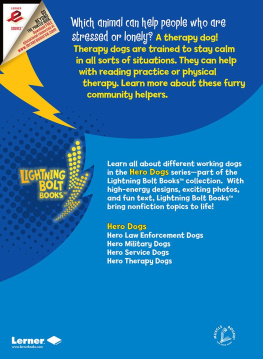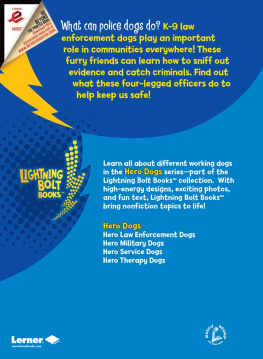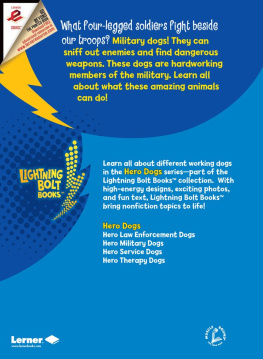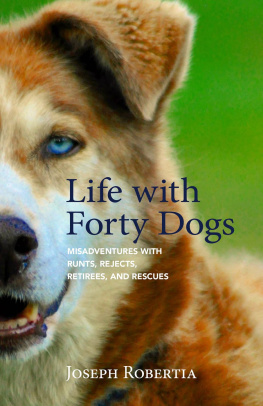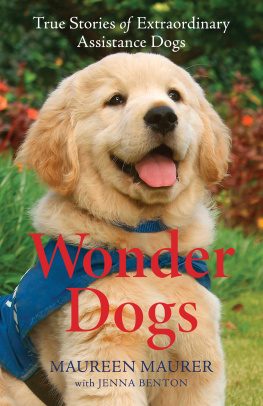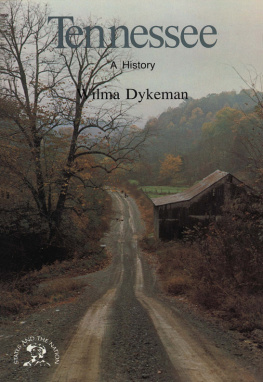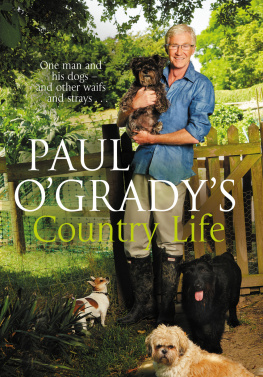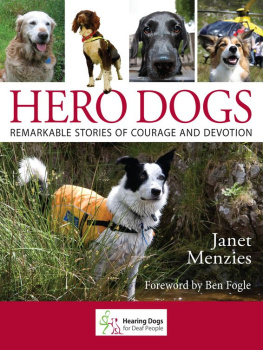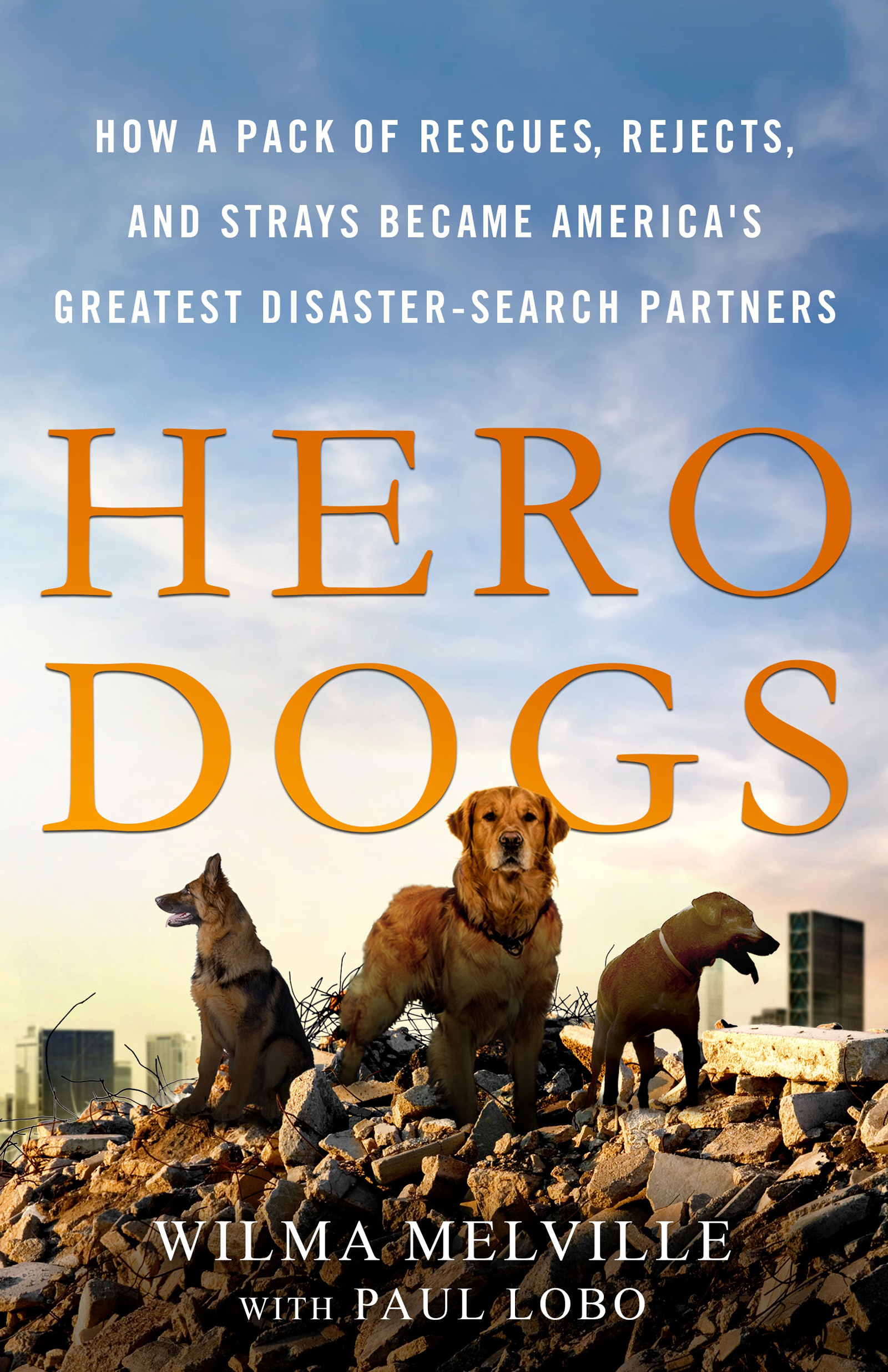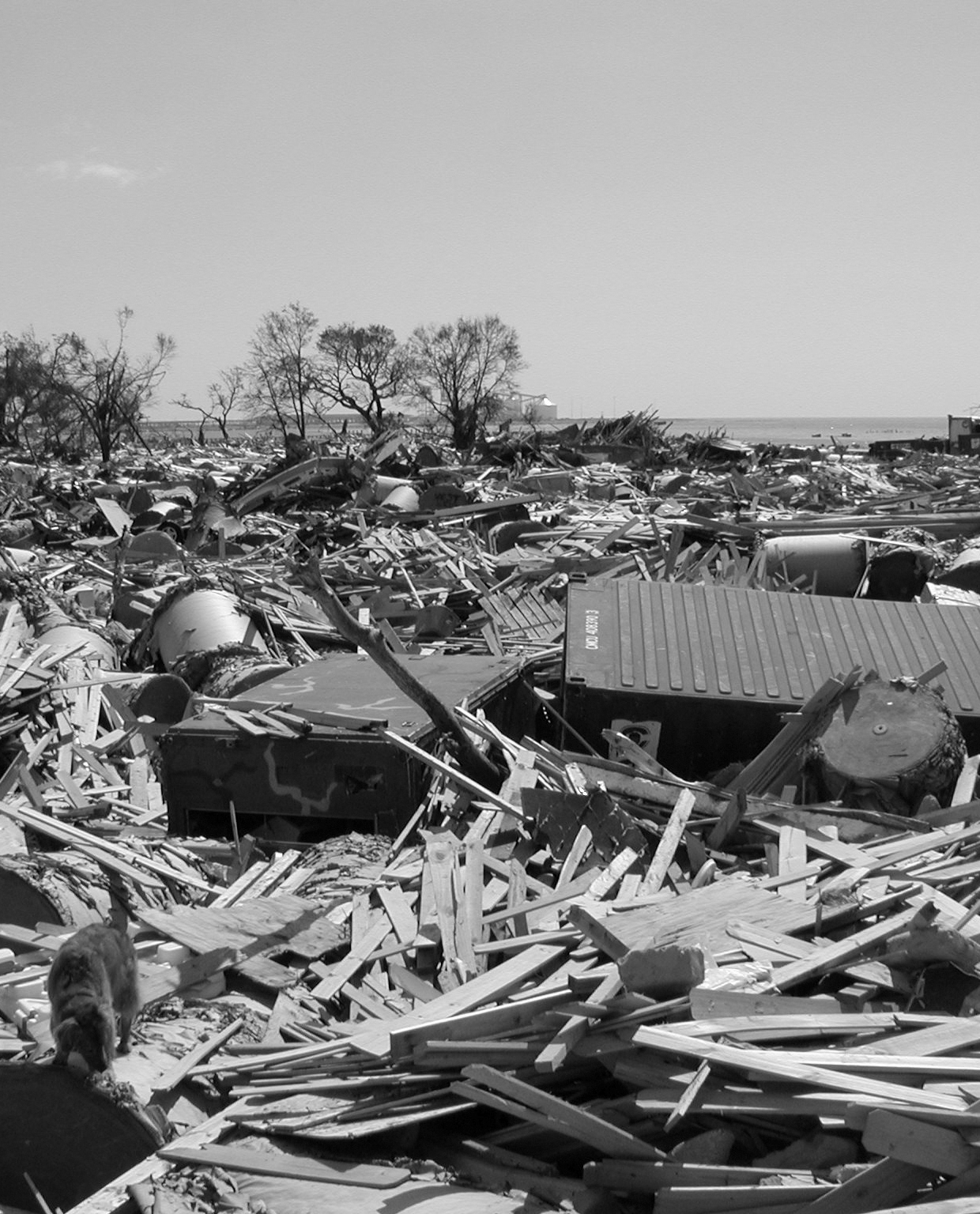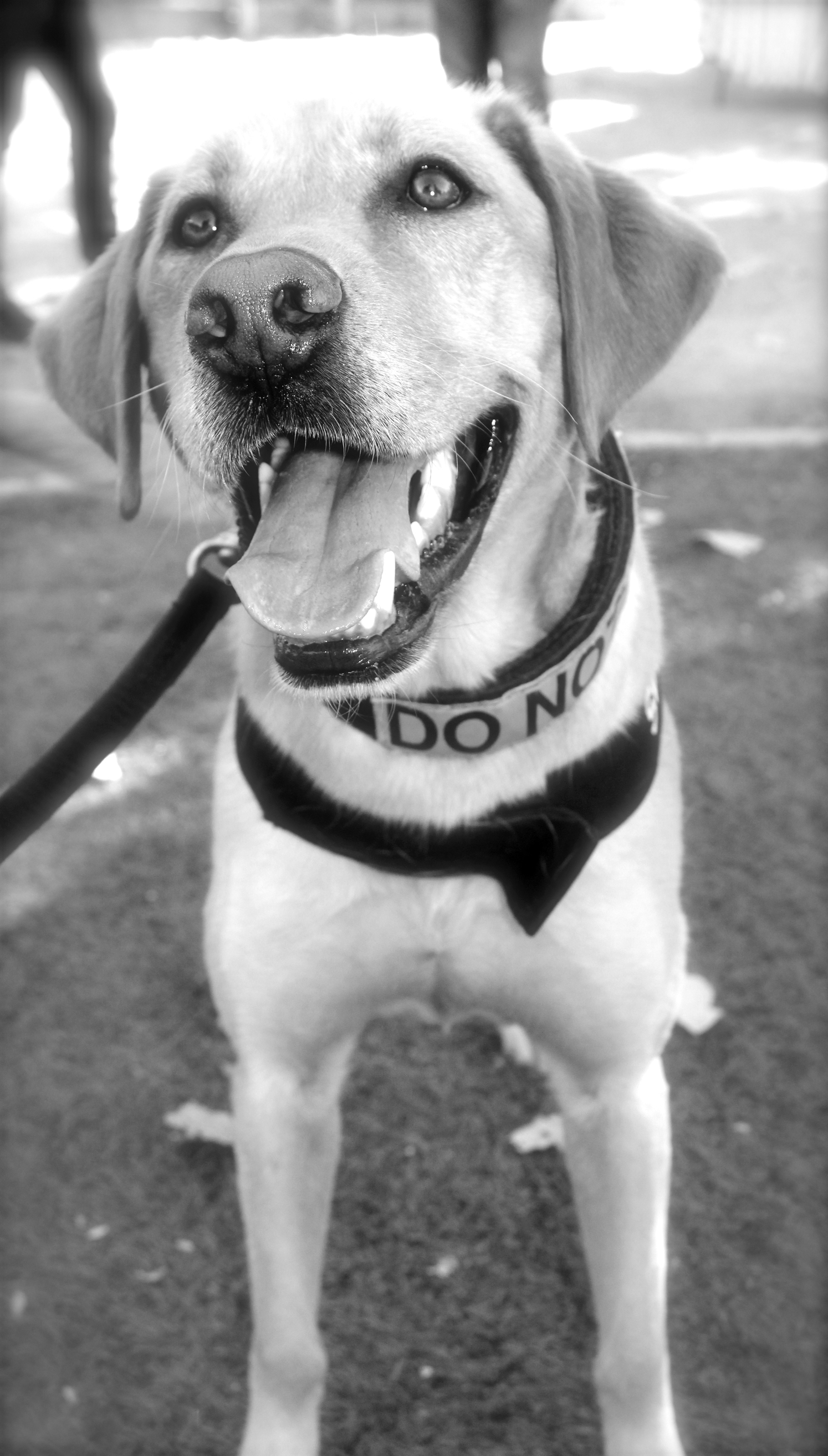I knew we were in for a show the instant I dropped the leash.
Murphy was off so fast her paws barely touched the ground. Only sixteen weeks old, the Black Labrador was nowhere near her adult size, but her hips and chest were thick with corded muscle and every ounce of her bodyevery fiber it seemedwas engaged in the run. She blasted across the training area near Bakersfield, her legs a blur, kicking up rooster tails of red California dirt. A few yards in front of her, and growing ever closer, was an odd conglomerate of large blue plastic tubes, lined up in a row like someone had laid down a giant pan flute on its side. The tubes were as wide as large oil drums and stretched over ten feet long. Somewhere in those tubes was a person in need of rescue.
It was 1993 and Id been training to become a canine search-and-rescue (SAR) handler for a few years. Id done my part. Now the determination of who would be my partner was up to Murphy.
She suddenly cut right so fast her tongue maintained its former trajectory and flapped out to the side like a pink flag. As she flew past the first couple sealed tubes, I felt my stomach knot in doubt. Perhaps Id been overconfident coming into the session. Perhaps she wasnt ready for this level of search yet.
Murphy had been seven weeks old when Id purchased her from a family who professionally bred hunting dogs. The transaction had been quickjust long enough for the breeders to give advice on feeding patternsthen the tiny pompom of a pup had been placed in my arms like a furry receipt. Silent and docile, shed slept all the way home. I was a little worried. Search dogs need to be bursting with energy. Cute as she was, I couldnt help but wonder if Id purchased a dud search dog. I didnt wonder long.
I mixed her a bowl of the prescribed food while she sat uninterested in the corner. Without much thought, I lowered the bowl toward the kitchen floor.
Murphy exploded out of the corner like a rocket. This dark projectile launched toward me and punched the food bowl out of my hands. The kibble sprayed into the air and rained down onto the kitchen tile. I was frozen in disbelief. Murphy was not. She morphed from rocket into vacuum cleaner and sucked down every morsel of food within minutes, leaving the kitchen tile looking as if nothing had ever happened. Murphy licked her chops and, with a yawn, retired behind her indifferent puppy faade. My shock gave way to glee. It looked like I might have a search dog on my hands after all.
Nine weeks later I was watching Murphy zip across our volunteer groups SAR proving grounds. A number of Swiss disaster search dog trainers had flown in to teach advanced canine search techniques and evaluate some of our up-and-coming dogs. When it came to canine search, the Swiss were the gold standard. They pioneered canine search around 1800, patrolling the Great St. Bernard Pass and other high peaks in Switzerland for lost outdoorsmen. If Murphy truly had what it took to be a search dog, the Swiss trainers would know.
Now, one of the trainers waited, hidden in a blue tube, as Murphy closed in. My dog would need to complete two tasks. First, locate the tube where the trainer was hiding and give a bark alertbark consistently at the hidden human until that person was revealed. After she succeeded in locating the victim, Murphy would still need to show a continued drivewhat we call prey driveuntil she got her reward. In her case, the reward, or prey, being a worn-out chew toy. These tasks would show not only that Murphy could use her nose to find a buried human, but also be motivated to continue searching after the initial victim was found. Both tasks would need passing grades if I wanted to consider her for serious search dog training. There was no middle ground.
Murphy zeroed in on the middle tube and stopped dead. Her tail started lashing back and forth and she launched into a chorus of barks. I heard the muffled praise from the hidden trainer. Murphy kept up her consistent bark alert. So far, she was performing a textbook search. One box checked, one to go.
The lid of the blue tube popped open. Wed now see if Murphys drive would hold strong until she received her reward. Time seemed to pause as the trainer began to squirm out of the tube.
Then Murphy charged forward. The trainers feet hadnt even cleared the lid as Murphy plowed over him and into the tube, searching for the chew toy he was hiding. I heard the delighted hooting of the trainer as he wrestled and teased Murphy with the toy, making her work just a little more. Then both emerged, the trainer smiling broadly and Murphy strutting triumphantly with the toy dangling from her mouth. It was beautiful.
You can make many mistakes with this one, the trainer said with a thick German accent, patting Murphys head.
He meant the dog had such a strong prey drive, the handler wouldnt need to do much except get out of the way. In search dog parlance, hed just given Murphy the equivalent of an A + . She still had a long way to go before she was deployment ready, but there was now no doubt in my mind Murphy was a special dog.
What I didnt know was that, for what was looming over the horizon, she would have to be.
I didnt know why the line wasnt moving. I craned my neck over the firefighter in front of me, trying to identify the holdup. The long column of search dog handlers and rescue workers stretching down the buss main aisle would move forward a few steps then stop abruptly, causing a bumper-car effect for everyone still confined on the bus. Step. Stop. Bump. Repeat. What on earth was going on?
I dislike inaction in any form. That was part of the reason after Id retired from teaching Id wanted to become a search dog handler. But a disdain for inaction was only part of the equation.
Ive been known to push limits. Have my entire life. Initiative and persistencethe broken-down-then-rebuilt-until-strong kind of persistenceare an integral part of my personal philosophy. Im not a hard case; I just feel the world is never outside an individuals power to change. To me, if you feel something is the right thing to do, theres only one option: you commit to doing it. I was sixty-one years old in 1995, but ever since grade school when Id taken to hauling my wiry mutt Toffee up into a shaky tree house to help me eat my PB&J sandwiches, Id always wanted to train a dog to do something special. Thus, I was drawn to SAR. There are many types of canine SARcadaver search, water search, avalanche search, wilderness searchand each requires unique training. Disaster search is where the dog searches for live victims trapped in a structure collapse or crashed vehicle or landslide or any other event that might shield victims from the eyes of rescuers. Most important in my mind, in disaster search, my dog and I could potentially


